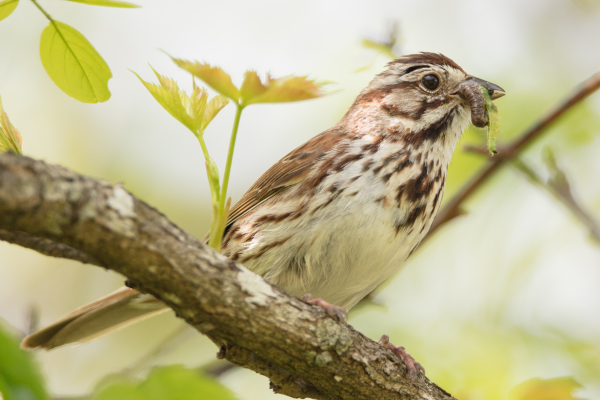The Need for More Trees
All three of our service areas – Toronto, York Region and Durham Region – have set ambitious goals to increase canopy cover. But why is this so important when Canada is ranked third in the world for total forest cover? Part of the reason is that increasing canopy cover has numerous benefits that directly impact human well-being. Trees help lower temperatures, which can reduce energy costs for cooling. They also improve air quality and contribute to better mental and physical health for the people living in these areas. Adding more trees to our landscape offers many benefits for people.

Biodiversity and Canopy Cover
Beyond the human-centric benefits, higher canopy cover is crucial for maintaining biodiversity. The ecosystems of Southern Ontario are incredibly diverse, featuring many species unique to Canada. However, the natural environment of this region is under threat due to historical and ongoing human development, putting many plant and wildlife species under significant pressure.
Environment Canada has set three thresholds to protect biodiversity and ecosystem functions, with a minimum recommendation of 30 percent canopy cover. Unfortunately, Southern Ontario has only about 25 percent forest cover. Areas further southwest and more urban regions have even less than 25 percent. It is important to note that a 30 percent minimum canopy cover is actually a high-risk target which that may only support less than one half of the potential species richness, with a safer recommendation being between 40 and 50 percent.

This lack of adequate canopy cover has significant repercussions for local wildlife. According to a report by Ontario Nature, there are at least 470 species in Canada on the brink of extinction. Almost half of those species at risk (200) are located in Ontario, and 78 of these depend on the Greenbelt for their habitat needs. The forests of Southern Ontario are particularly important for some of Canada’s rarest breeding forest birds, including the Acadian Flycatcher, Cerulean Warbler, Louisiana Waterthrush, Prothonotary Warbler and Red-headed Woodpecker. These species rely on the interiors of mature deciduous and mixed forests to breed.

The Role of Insects in Ecosystems
Doug Tallamy, in his book "Bringing Nature Home," highlights the critical role insects play in ecosystems. Thirty-seven percent of animal species worldwide are herbivorous insects. These insects are exceptionally efficient at converting plant tissue into insect tissue, providing a vital food source for other species. In North America, about 96% of terrestrial bird species rely on insects to feed their young. This interdependence underscores the importance of diverse plant life, which supports insect populations and, by extension, the broader food web.

However, up to 40 percent of known insect species globally are in decline, and a third of those are endangered. The main drivers of this decline are intensive agriculture, heavy pesticide use, urbanisation and climate change. With the combination of climate change and Southern Ontario being highly agricultural and urban, our shrinking natural lands are bearing an increasingly high burden of supporting our ecosystems. Since insects are important for all kinds of ecosystem functions, like maintaining healthy soil, pollinating flowers and crops and serving as a food source for other wildlife species, the loss of insect populations has dire implications for both ecosystems and human-centric systems.
What You Can Do to Help
While our urban and suburban areas may never be the best habitat for some wildlife species, we can make a significant difference for the many species who live amongst us. There are two simple ways individuals can contribute to increasing canopy cover and supporting local biodiversity. Planting native trees and shrubs in your yard, along with native flowering plants and grasses, boosts #BackyardBiodiversity by providing essential food and shelter for wildlife. Another way to help is by volunteering with community planting and stewardship events, such as those organized by LEAF. Each native plant added to the landscape, either in your yard or in the community, helps support the local ecosystem while also benefiting people.
By understanding the importance of increasing canopy cover and taking action to support local ecosystems, we can help ensure a healthier, more biodiverse Southern Ontario for future generations.
Justin Lewis is the Marketing and Communications Lead at LEAF.
The #BackyardBiodiversity campaign is a partnership initiative with the Toronto Wildlife Centre and is supported by Ontario Power Generation.
LEAF offers a subsidized Backyard Tree Planting Program for private property. The program is supported by the City of Toronto, the Regional Municipality of York, the City of Markham, the Town of Newmarket, the Regional Municipality of Durham, the Town of Ajax, the Township of Brock, the Municipality of Clarington, the City of Oshawa, the City of Pickering, the Township of Scugog, the Town of Whitby and Ontario Power Generation.
